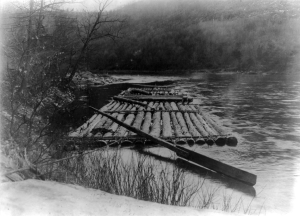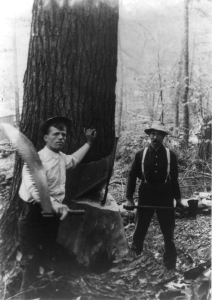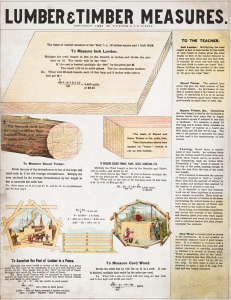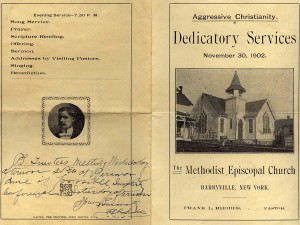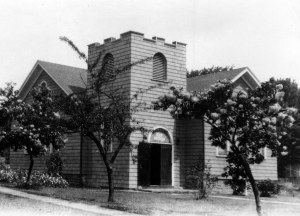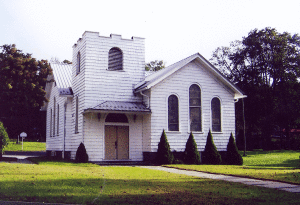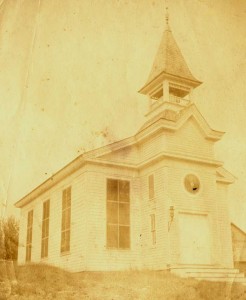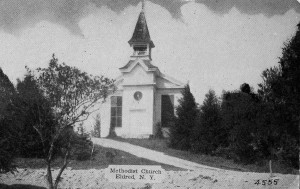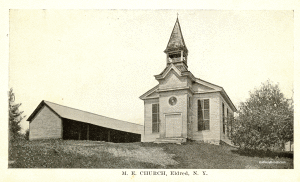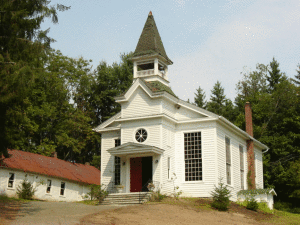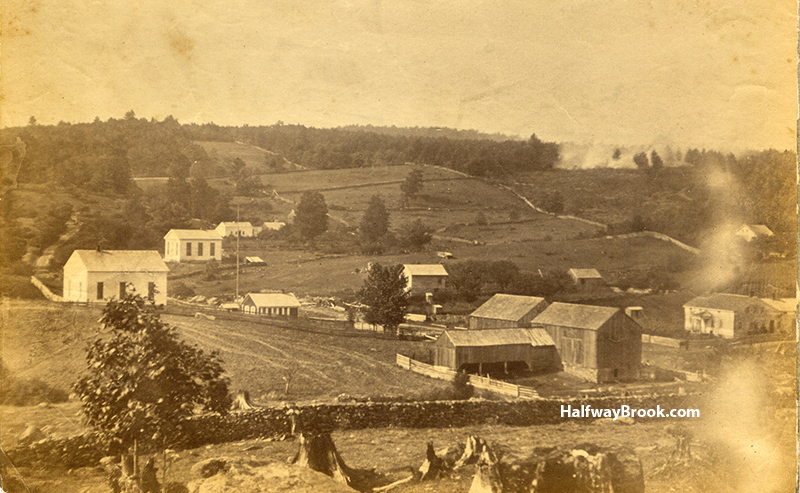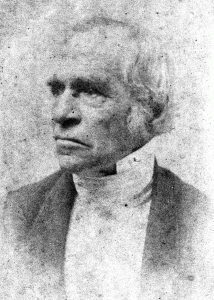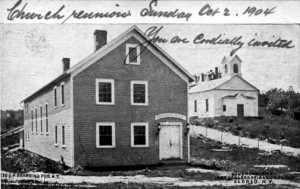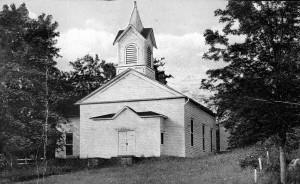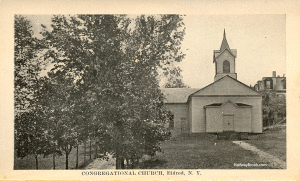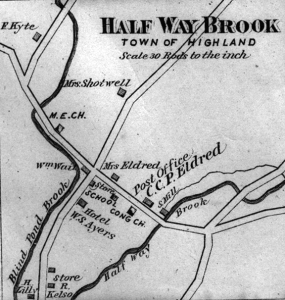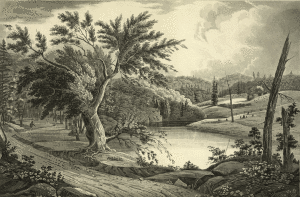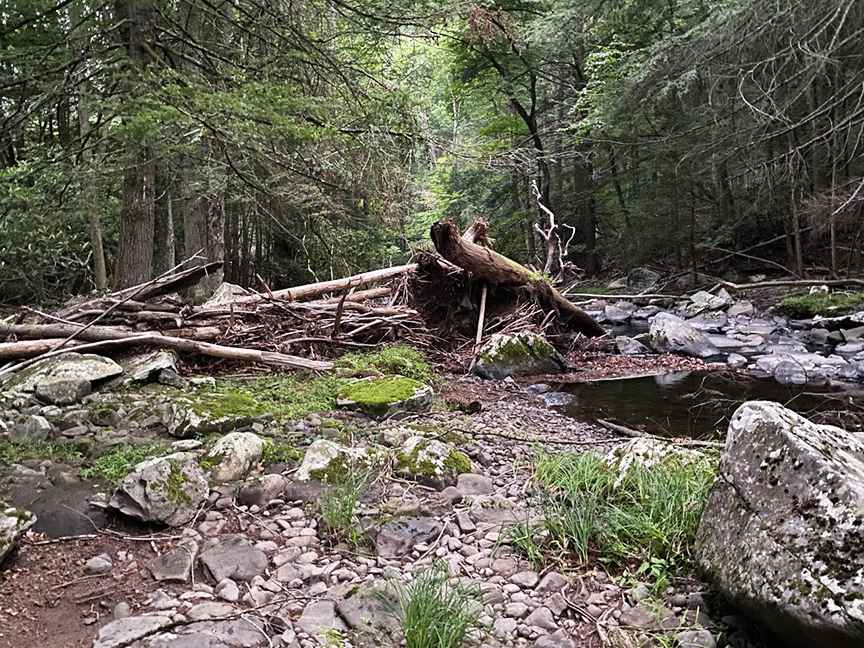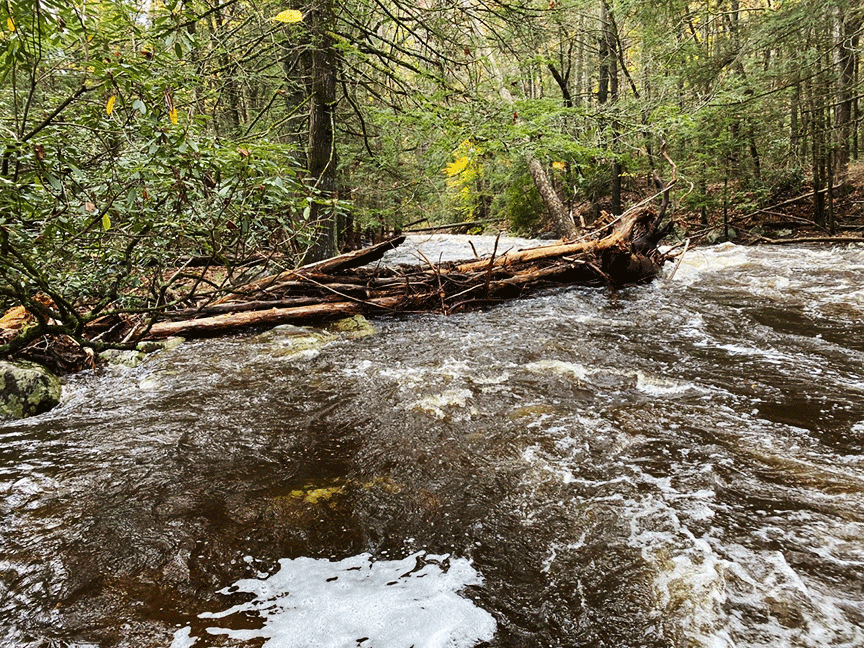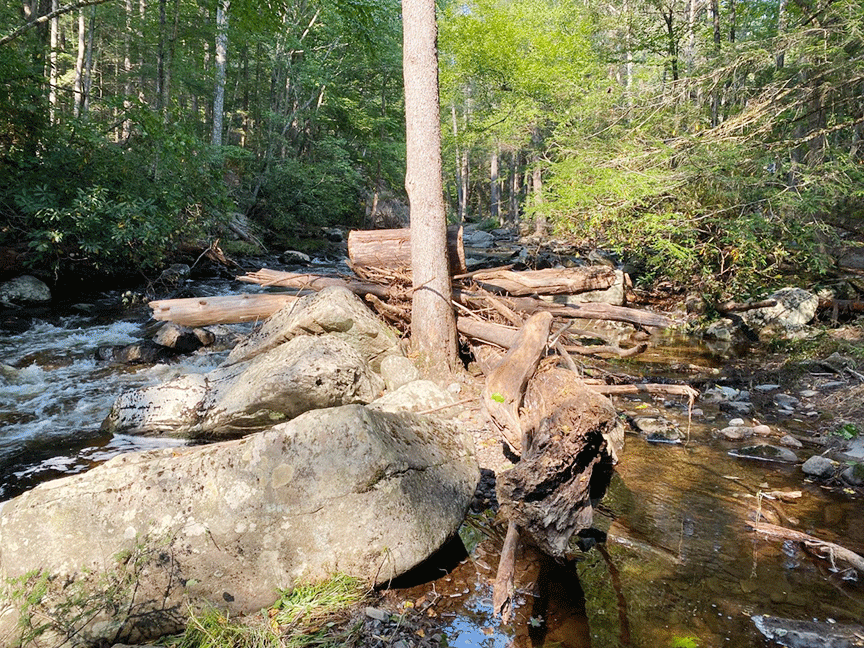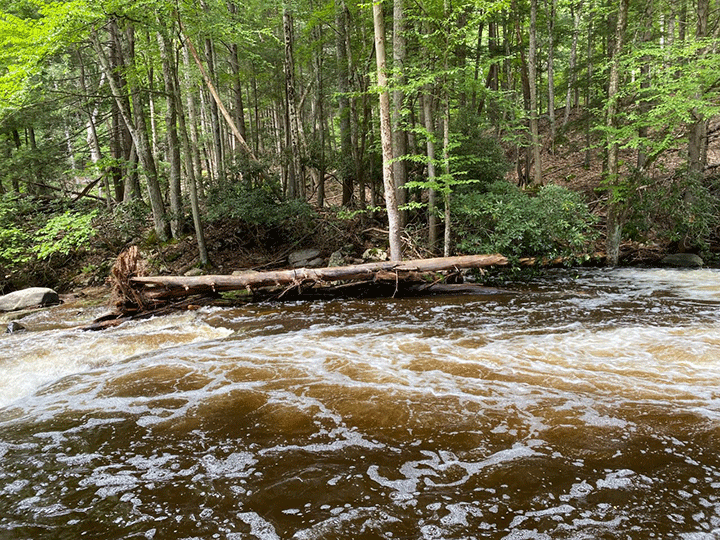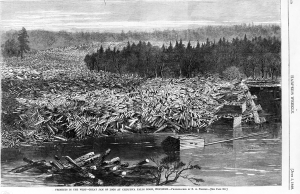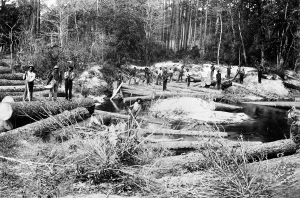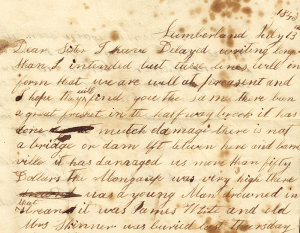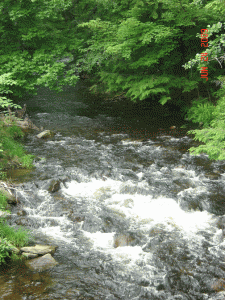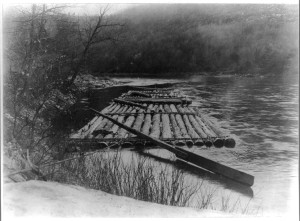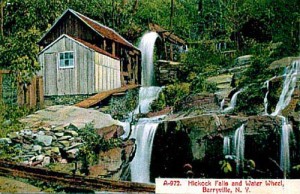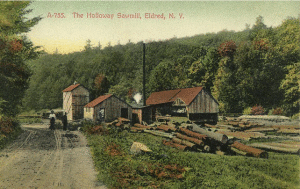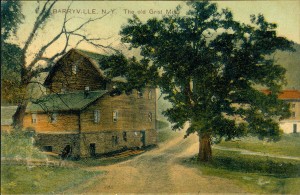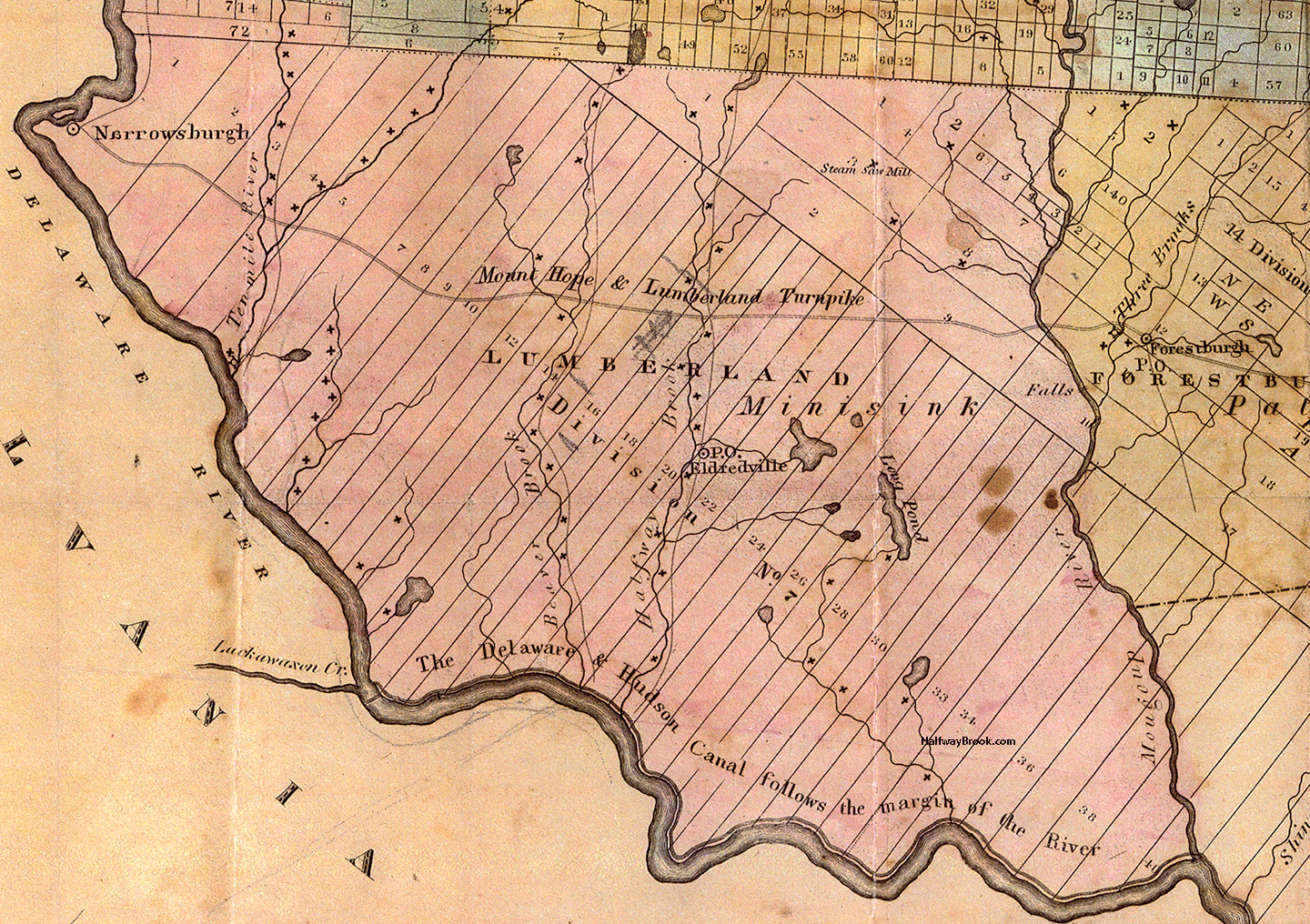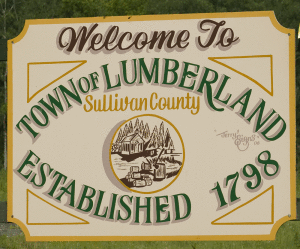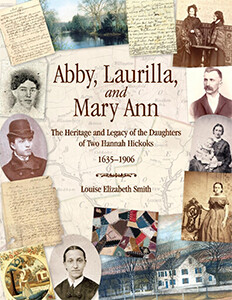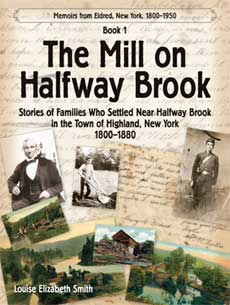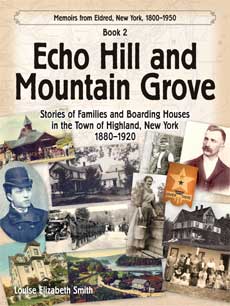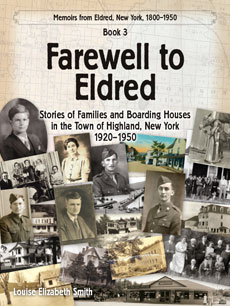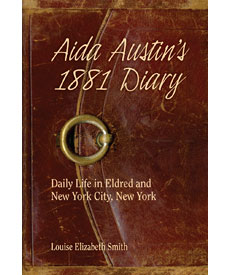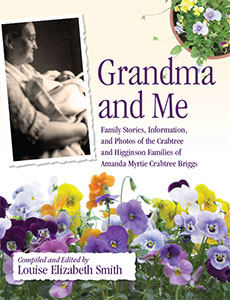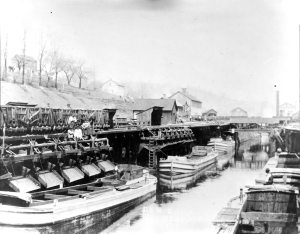
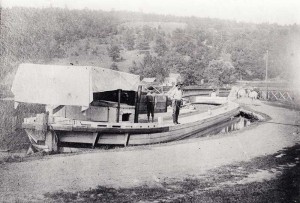
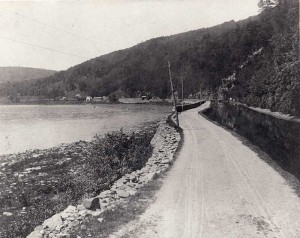
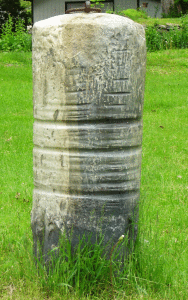
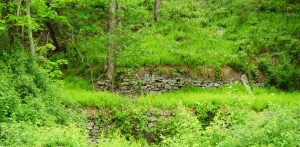
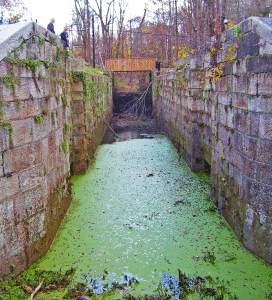
The Delaware and Hudson Canal opened in October 1828.
In November 1828 the first canal boats loaded with coal arrived at the Hudson River.
From then until 1899, barges carried anthracite coal from the Moosic Mountains of Northeastern Pennsylvania mines to the coal markets of New York City, by way of the Delaware and Hudson Rivers.
The D&H Canal took 2,500 men and 200 teams of horses three years to dig and blast through 108 miles of wilderness to connect the Delaware and the Hudson Rivers.
The canal began at Rondout Creek near Kingston (on the Hudson River) and went through several areas on its way to Port Jervis on the Delaware River; then ran northwest on the New York side of the Delaware River, crossing into Pennsylvania at Lackawaxen and on to Honesdale.
Lumberland
The D&H Canal played a vital part in the growth of the communities along or near the Delaware River, giving work options other than lumbering and farming.
In the Town of Lumberland, the canal went some 17 miles from the Mongaup River to a point close to the junction of the Delaware and Lackawaxen Rivers. Originally there were eleven locks, but it was increased to fourteen.
“By means of aqueducts it crossed four principal streams the Mongaup, the Pond Eddy Brook, the Halfway Brook, and the Beaver Brook…To each and every lock, a dwelling house was erected for the use of the locktender, and located beside the towpath and central part of the lock, if the ground permitted.”
—Johnston, p. 19.
The person (often a boy aged 12 to 16) who led the mules pulling barges along the towpath, was paid three dollars a month. This included walking 15-20 miles a day, pumping out the barges, and tending the animals.
At first, it took a week to go the entire length of the canal. The canal was closed on Sunday, and in the winter when the water froze up or was likely to.
A blacksmith shop, a gristmill, and a broom handle factory were established at The River settlement (later called Barryville) shortly after 1828.—Excerpt from The Mill on Halfway Brook, Chapter 3.
Pelton Soda Factory
Asher and Carrie Pelton turned an old D&H Canal office building into a Soda Factory. Click on above link for more information.

